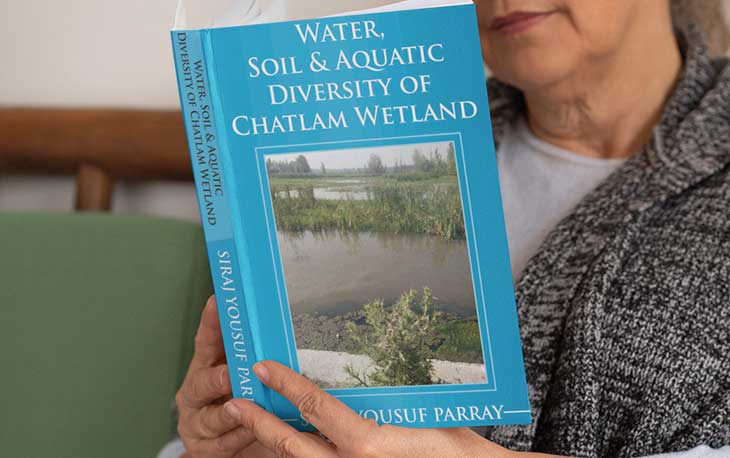Wetlands play a very important role in maintaining the ecological balance by acting as pollutant sinks.
Besides providing habitat for a variety of aquatic and terrestrial life they are important in maintaining biodiversity and act as recreational hotspots.
Due to extensive anthropogenic pressure these biotypes are deteriorating due to improper management.
Extensive urban and rural development will further deteriorate the carrying capacity of this eutrophic water body.
Wetlands act as transitional zones their socio economic importance is felt at an increasing rate.
They are the source of water, food, fodder, fisheries and act as important ecotourism sites besides stabilizing the microclimate of the particular area.
Due to unsustainable utilization of the wetland resources they are under serious threat and immediate efforts need to be undertaken so that the conservation and restoration measures may be undertaken before their climactic succession and ultimate loss of water body.
Chatlam wetland is located in Pampore area and about 30 kms from Srinagar city.
The source of water to this wetland is springs within the basin.
It is also a resting cite for migratory water fowl having flying linkage with Dal and Hokersar in particular.
However, over the years this wetland is under constant threat due to insatiable greed of humans, pollution and illegal construction and encroachments.
It is in this backdrop, this study will help us to understand the present status of Chatlam wetland.
It is in this context that the present study entitled “Water, Soil & Aquatic Diversity of Chatlam Wetland” was undertaken to understand the problems faced by the Chatlam Wetland and the suitable eco restoration measures.
Siraj Yousuf Parray
The author is born at Paljan Tarigam of District Kulgam, completed his B,Sc at Govt. Degree College boys Anantnag, Kashmir and Masters Degree in Botany from University of Kashmir. He completed his M.Phill. On Wetland Ecology and also qualified NET (CSIR) in 2007, and is presently pursuing Doctorate from Lovely Professional University Jalandhar, Punjab. Presently author is working as senior Assistant Professor of Botany at Govt. Degree College Bijbehara. He has published many papers in national and international Journals and attended many conferences and published his research findings.
Dr Bhupendra Koul
Dr Bhupendra Koul is serving as an Assistant Professor in the School of Bioengineering and Biosciences, Lovely Professional University (LPU), Punjab, India. He was awarded with CSIR-Senior research fellowship in the year 2013. During his PhD, at Plant Transgenics Lab., CSIR-National Botanical Research Institute (CSIR-NBRI), Lucknow. He has worked on the optimization, introduction and expression of modified full-length and truncated versions of Bt-cry1Ab and 1Ac genes in tomato for developing non-chimeric and stable transgenic lines resistant to two lepidopteran insects Helicoverpa armigera and Spodoptera litura, and evaluated the performance of both the versions of cry1Ab and 1Ac genes for the stability and efficacy of insecticidal toxin in transgenic plants. He has also evaluated the performance and roles of different cis-motifs of artificial-synthetic-promoters for overexpression of genes in tomato and performed comparative in silico analyses of different cry1A genes for toxicity to target insects. He has 5.9 years of research experience and 5.5 years of teaching experience to the UG and PG students and has received the “Teacher appreciation award, 2016” at LPU, in the Discipline of Biotechnology, through MHRD minister, Government of India. He has designed the full-length synthetic cry1Acgene (NCBI submission accession No.: KP195020.1; GI:768678299) and has published 33 papers (research and review) in national and international journals including BMC Genomics, Plant Physiology and Biochemistry, Journal of Ethnopharmacology, South African Journal of Botany, Springer Plus, Biomolecules 13 book chapters and 2 authored books in Springer Nature, besides presentation of his research in the national and international conferences.
